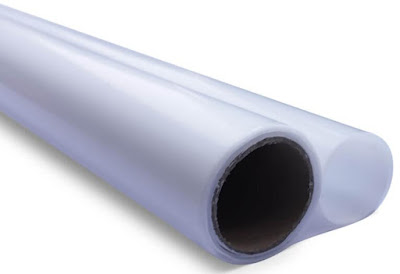PTFE has excellent properties such as chemical inertness,heat resistance (both high and low), electrical insulation properties, low coefficient of friction (static 0.08 and dynamic 0.01), and nonstick property over a wide temperature range (260 to þ260 C). It has a density in the range of 2.1e2.3 g/cm3 and melt viscosity in the range of 1e10 GPa persecond. Molecular weight of PTFE cannot be measured by standard methods. Instead, an indirect approach is used to judge molecular weight. Standard specific gravity (SSG) is the specific gravity of a chip prepared according to a standardized procedure. The underlying principle is that lower molecular weight PTFE crystallizes more extensively, thus yielding higher SSG values.
PTFE that has not been previously melted has a crystallinity of 92e98%, indicating a linear and nonbranched molecular structure. Upon reaching 342 C, it melts changing from a chalky white color into a transparent amorphous gel. The second melting point of PTFE is 327 C because it never recrystallizes to the same extent as prior to its first melting.
First-order and second-order transitions have been reported for PTFE. The transitions that are close to room temperature are of practical interest because of impact on processing of the material. Below 19 C the crystalline system of PTFE is a nearly perfect triclinic. Above 19 C, the unit cell changes to hexagonal. In the range of 19e30 C, the chain segments become increasing disorderly and the preferred crystallographic direction disappears, resulting in a large expansion in the specific volume of PTFE (1.8%) which must be considered in measuring the dimensions of Marticles made from these plastics.
PTFE is by far the most chemically resistant polymer among thermoplastics. The exceptions include molten alkali metals, gaseous fluorine at high temperatures and pressures, and few organic halogenated compounds such as chlorine trifluoride (ClF3) and oxygen difluoride (OF2). A few other chemicals have been reported to attack PTFE at or near its upper service temperature. PTFE reacts with 80% sodium or potassium hydroxide and some strong Lewis bases including metal hydrides.
Mechanical properties of PTFE are generally inferior to engineering plastics at the room temperature. Compounding with fillers has been the strategy to overcome this shortage. PTFE has useful mechanical properties in its use temperature range.
PTFE has excellent electrical properties such as high insulation resistance, low dielectric constant (2.1), and low dissipation factor. Dielectric constant and dissipation factor remain virtually unchanged in the range of 40 to 250 C and 5 Hz to 10 GHz. Dielectric breakdown strength (short term) is 47 kV/mm for a 0.25-mm-thick film. Dielectric breakdown strength is enhanced with decrease in voids in PTFE, which is affected by the fabrication process.
PTFE is attacked by radiation, and degradation in air begins at a dose of 0.02 Mrad.
Source:https://www.sukoptfe.com/polymer-properties-of-ptfe

No comments:
Post a Comment